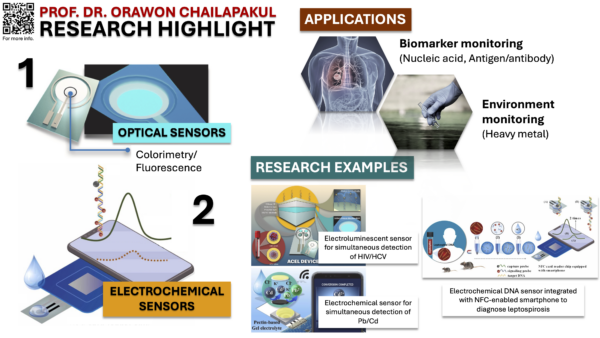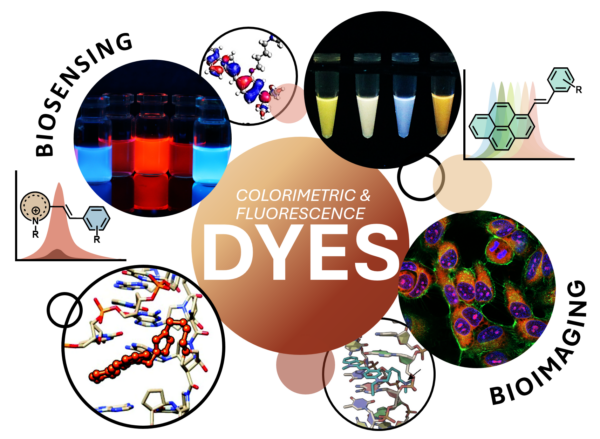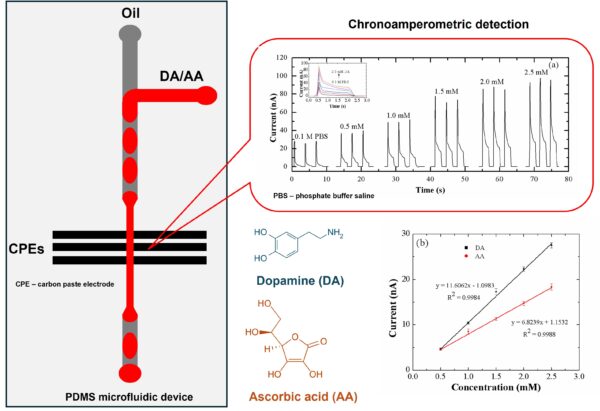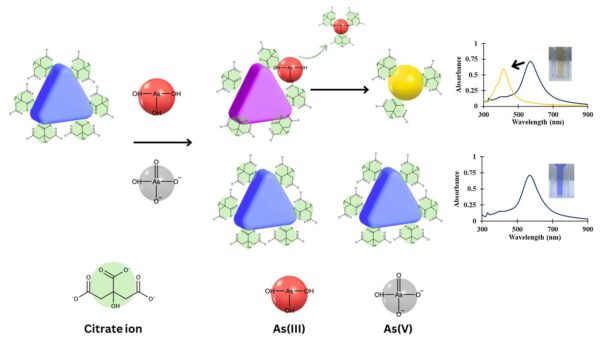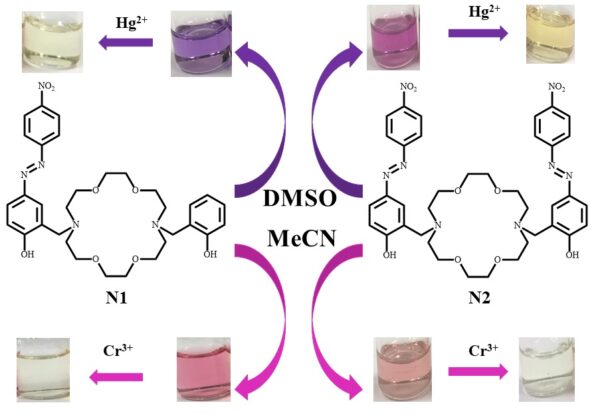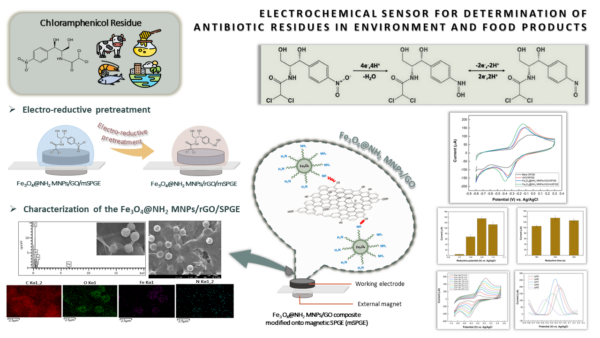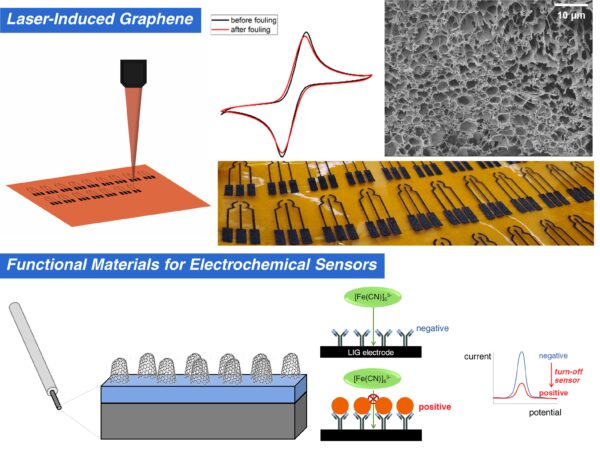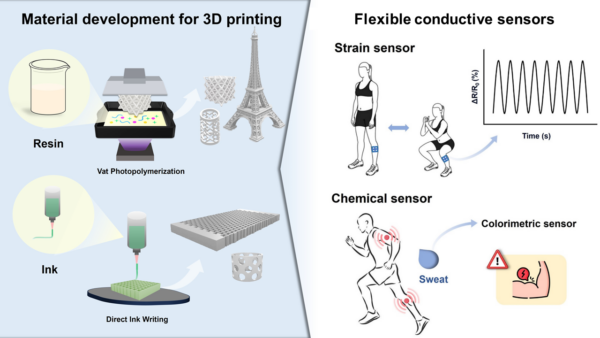Research Themes
Chemical and Bio-sensors
Prof. Orawon Chailapakul
Next-generation sensor technologies for advanced detection and monitoring in diverse fields
A method will be developed for the synthesis of gold (Au) and iron oxide (IO) dumbbell-like heterostructure. The material will be used as dual-responsive material through photothermal response of the Au module and magnetic hyperthermia response of the IO module. The synthesis will be done with Au nanorods of different aspect ratio as templates for the growth of IO modules. The length of the Au nanorods will be varied to control the orientation of the IO modules and tune both the photo- and magneto-responsive of the material. The final products will be tested as cancer hyperthermia agents in a 2D in vitro cell culture setting.
Prof. Tirayut Vilaivan
Molecular and cellular probes
Our recent research focuses on developing novel environment-sensitive dyes that can give distinct color and/or fluorescence change in response to external stimuli such as pH, polarity, viscosity, complexation with metal ions, chemical reaction, or interaction with specific biomolecular targets such as nucleic acids, proteins, or cellular organelles. Such dyes are indispensable tools for chemo/biosensing and bioimaging applications. Target specificity can be further enhanced by combining the dyes with a recognition element such as peptide nucleic acids (PNA) or aptamers.
Assoc. Prof. Monpichar Srisa-Art
Minituarised analytical devices served as chemical and bio-sensors
Microfluidic systems (e.g. droplet-based microfluidics and paper-based analytical devices) have been widely used as chemical and biological sensors due to the outstanding advantages of miniaturisation, including small sample consumption, high analytical performance, low cost, portability, the potential for parallel analysis and short analysis times. Therefore, measurements using microfluidic approaches can be performed in a high-throughput manner with small sample consumption, which could be an ideal platform for on-site measurements. Integrated with either electrochemical detection or colourimetry, microfluidic systems could be served as chemical and biological sensors for applications in medical diagnosis (e.g. monitoring of biomarkers) food contaminant analysis and environmental monitoring.
Assoc. Prof. Apichat Imyim
Chemical sensors based on metal nanoparticles and natural pigments
This research explores the design and development of chemical sensors that combine the unique optical properties of metal nanoparticles with the eco-friendly characteristics of natural pigments. By harnessing localized surface plasmon resonance (LSPR) and colorimetric responses, these hybrid materials enable sensitive and selective detection of metal ions, anions, and organic contaminants. The approach emphasizes green sensor fabrication, low-cost materials, and visual signal readouts for practical applications in environmental monitoring, food safety, and chemical analysis.
Assoc. Prof. Saowarux Fuangswasdi
Naked eye sensors for metal ions
Sensor development based on supramolecules such as crown ethers or calixarenes for metal ions focusing on complexation study in solutions. Various techniques like UV-visible/fluorescence spectrophotometry, potentiometry and/or extraction are used to study stability constants.
Assist. Prof. Janjira Panchompoo
Development of electrochemical sensors and electroanalytical methods for detecting various active compounds, with applications in medical/healthcare, environmental, and food safety sectors.
Electrochemical techniques typically offer numerous potential advantages in terms of simplicity, high sensitivity, fast analysis time, cost-effectiveness, and capability of miniaturization. Electroactive species can be detected directly at the electrode surface through these techniques. Therefore, we are currently focusing on deliberately modifying electrode surfaces to introduce electrochemical surface functionalities, increase the active surface area, and thereby enhance electrochemical sensitivity. These modified electrodes can then be further developed as electrochemical sensors for various medical/healthcare and environmental applications, as well as for food safety control. For example, an electrochemical sensor based on screen-printed electrodes was developed for detecting chloramphenicol (CAP), a widely used antibiotic in human and veterinary medicine. The sensor utilized a composite of amine-functionalized magnetite magnetic nanoparticles combined with reduced graphene oxide, which was then applied to a magnetic screen-printed graphene electrode. The sensor possessed a significantly enhanced surface area, high electrical conductivity, and good electrocatalytic activity, enabling selective, sensitive, and accurate determination of CAP. Moreover, the ferromagnetic property of magnetite, attracted by an external magnet, enhanced the electrochemical process of CAP. Consequently, sensitive electrochemical detection of CAP could be achieved through the electro-reductive pretreatment of CAP, followed by the oxidation of its reduced CAP formed, thereby enhancing the sensor’s performance. This developed electrochemical sensor was successfully applied to determine CAP in food products (e.g. milk and honey) with satisfactory recoveries.
Assist. Prof. Pumidech Puthongkham
Electrochemistry at novel carbon electrodes with applications for chemical sensors and biosensors
Our research program delves into the fundamental understandings of how the structural and chemical properties of carbon-based electrodes influence their electrochemical performance. By utilizing appropriate characterization tools and redox probes, we gain knowledge to design better electrochemical sensors. We are currently investigating laser-induced graphene electrodes, which demonstrate exceptional electrochemical properties. We are also developing many graphene-based electrochemical sensors and biosensors for food safety, environmental monitoring, and clinical diagnostics by integration of the graphene electrodes with recognition elements such as DNA, RNA, antibodies, and enzymes, as well as advanced materials like nanoparticles and polymers. Furthermore, we are incorporating machine learning and data analytics to enhance sensor fabrication and analyze complex electrochemical data, paving the way for more efficient and accurate sensing technologies.
Assist. Prof. Benjaporn Narupai
3D Printed Flexible Conductive Sensors
Conductive sensors offer significant potential in applications such as wearable electronics, biomedical devices, strain sensors, and soft robotics. However, traditional fabrication methods for these materials often restrict the complexity of their geometries. In our research group, we have developed polymeric materials specifically designed for vat photopolymerization and direct-ink write 3D printing. While 3D printing enables the creation of intricate geometries, we have tailored these materials to exhibit excellent conductivity, mechanical strength, and elastic recovery, with the goal of utilizing them in strain and chemical sensing applications.


